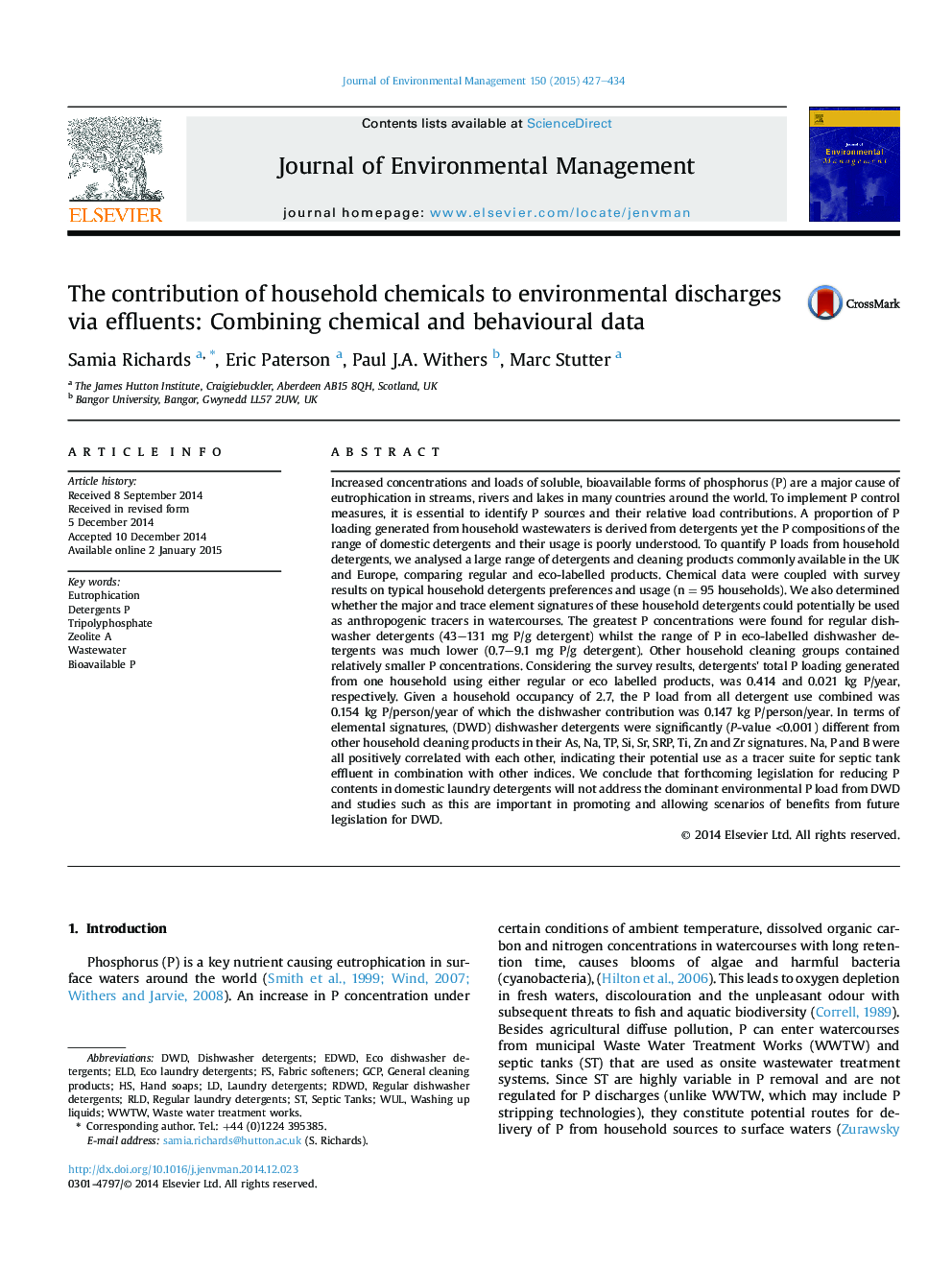| Article ID | Journal | Published Year | Pages | File Type |
|---|---|---|---|---|
| 7482993 | Journal of Environmental Management | 2015 | 8 Pages |
Abstract
Increased concentrations and loads of soluble, bioavailable forms of phosphorus (P) are a major cause of eutrophication in streams, rivers and lakes in many countries around the world. To implement P control measures, it is essential to identify P sources and their relative load contributions. A proportion of P loading generated from household wastewaters is derived from detergents yet the P compositions of the range of domestic detergents and their usage is poorly understood. To quantify P loads from household detergents, we analysed a large range of detergents and cleaning products commonly available in the UK and Europe, comparing regular and eco-labelled products. Chemical data were coupled with survey results on typical household detergents preferences and usage (n = 95 households). We also determined whether the major and trace element signatures of these household detergents could potentially be used as anthropogenic tracers in watercourses. The greatest P concentrations were found for regular dishwasher detergents (43-131 mg P/g detergent) whilst the range of P in eco-labelled dishwasher detergents was much lower (0.7-9.1 mg P/g detergent). Other household cleaning groups contained relatively smaller P concentrations. Considering the survey results, detergents' total P loading generated from one household using either regular or eco labelled products, was 0.414 and 0.021 kg P/year, respectively. Given a household occupancy of 2.7, the P load from all detergent use combined was 0.154 kg P/person/year of which the dishwasher contribution was 0.147 kg P/person/year. In terms of elemental signatures, (DWD) dishwasher detergents were significantly (P-value <0.001) different from other household cleaning products in their As, Na, TP, Si, Sr, SRP, Ti, Zn and Zr signatures. Na, P and B were all positively correlated with each other, indicating their potential use as a tracer suite for septic tank effluent in combination with other indices. We conclude that forthcoming legislation for reducing P contents in domestic laundry detergents will not address the dominant environmental P load from DWD and studies such as this are important in promoting and allowing scenarios of benefits from future legislation for DWD.
Keywords
Related Topics
Physical Sciences and Engineering
Energy
Renewable Energy, Sustainability and the Environment
Authors
Samia Richards, Eric Paterson, Paul J.A. Withers, Marc Stutter,
